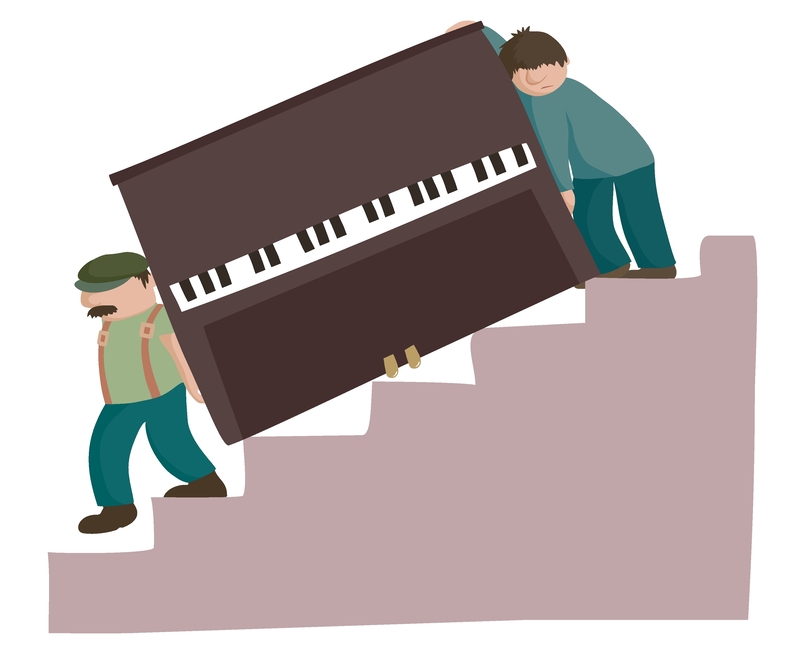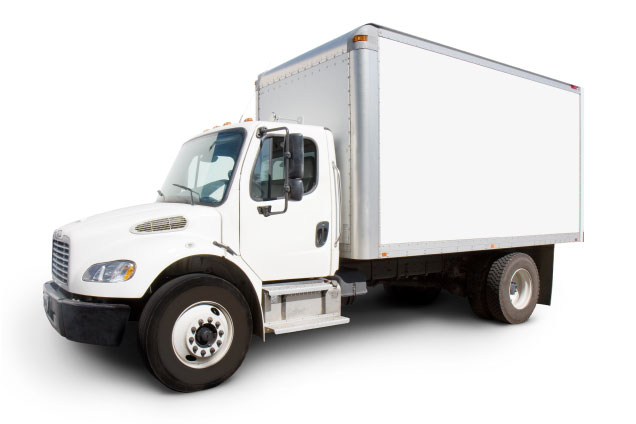Transform Solo Lifting: Secure and Effective Heavy Lifting on Your Own
Posted on 19/06/2025
Transform Solo Lifting: Secure and Effective Heavy Lifting on Your Own
Do you often find yourself having to move heavy objects alone? Whether you're a DIY enthusiast, a warehouse worker, or simply someone who needs to rearrange furniture at home, safe and effective solo lifting is a skill worth mastering. Mishandling heavy loads can result in serious injuries and property damage, but with the right strategies and equipment, you can turn solo lifting into a secure, manageable process.
Why Transform Your Solo Heavy Lifting Techniques?
Solo heavy lifting isn't just about brawn--it's about strategy, preparation, and using the correct tools. Too often, people underestimate the risks involved in lifting heavy items by themselves. Back injuries, strained muscles, or dropped objects are common consequences of poor lifting methods.
Learning to transform the way you lift heavy objects alone not only protects your physical health but also increases your efficiency, boosts your confidence, and prolongs your ability to perform such tasks over time.

Understanding the Risks of Solo Heavy Lifting
- Musculoskeletal Injuries - Back, neck, and shoulder strains are among the most common injuries from improper solo lifting.
- Short-term and Long-term Pain - Failure to use proper techniques can lead to chronic pain conditions.
- Decreased Productivity - Injuries mean lost work time and can slow you down on important projects.
- Property Damage - Dropping heavy items or losing control can cause costly damage to floors, walls, or the item itself.
Safe and Effective Solo Lifting Techniques
Mastering solo lifting techniques is about more than just bending at the knees. It involves a blend of ergonomics, preparation, the use of assistive devices, and understanding your physical limits.
1. Assess the Load and Pathway
- Check the Weight - Know your limits and never attempt to lift loads that feel unsafe.
- Clear the Path - Remove obstacles from your path to prevent tripping or sudden weight shifts.
- Inspect the Object - Make sure the load isn't slippery or likely to fall apart mid-lift.
Pro Tip: If possible, break down large loads into smaller, more manageable pieces to make your solo lift more effective and secure.
2. Use the Right Equipment for Solo Lifting
Modern technology has given rise to a variety of solo lifting devices that make the job easier and safer:
- Furniture Sliders - Great for dragging bulky furniture across floors with minimal effort.
- Lifting Straps - Distribute weight more evenly and protect your back.
- Dollies and Hand Trucks - Allow you to roll heavy items instead of carrying them.
- Hoists or Winches - For vertical lifting, these devices provide mechanical assistance for moving items.
- Lever Systems - Use basic physics to your advantage by tilting heavy objects gradually and safely.
3. Prepare Your Body and Mind
- Warm Up - Stretch your muscles and joints to prevent strains or pulls.
- Wear Appropriate Clothing and Footwear - Non-slip shoes and snug clothing help prevent accidents.
- Use Gloves - They improve grip and protect your hands during heavy lifting operations.
Remember: Lifting heavy items by yourself requires focus. Clear your mind and refuse distractions.
4. Apply Proper Solo Lifting Techniques
When lifting heavy objects independently, technique matters more than raw strength. Always:
- Bend at the Hips and Knees - Squat down, keeping your back straight.
- Keep the Load Close - Hold the object as close to your body as possible to reduce strain.
- Avoid Twisting - Turn your whole body, not just your spine, to prevent injuries.
- Lift Smoothly - Use slow, controlled movements; don't jerk the load up suddenly.
- Breathe Consistently - Do not hold your breath while lifting. Exhale on exertion.
Innovative Tools to Make Solo Heavy Lifting Easier
Advancements in lifting technology have made it possible to move very heavy objects safely and efficiently--even for those working alone. Let's explore top-rated tools and how they transform solo lifting.
Lifting Harnesses and Straps
- Forearm Forklift Lifting Straps - Designed to encourage proper lifting posture and reduce strain.
- Back-Support Harnesses - Prevent back injuries by dispersing the load across your torso and legs.
- Shoulder Dolly Moving System - Lets you carry heavy objects by shifting the weight onto your shoulders and hips.
Mechanical Aids
- Powered Hand Trucks - Battery-operated systems that can handle very heavy weights up ramps and stairs.
- Hydraulic Lift Tables - Raise or lower loads to a suitable height for safe transfer or assembly.
- Portable Hoists - Suited for lifting items to counters, vehicles, or raised platforms alone.
Furniture and Appliance Dollies
For anyone who must move large appliances or furniture solo, a dolly is an indispensable tool. Look for models with:
- Sturdy, easy-rolling wheels
- Secure straps for stability
- Anti-slip surfaces to prevent slippage
When in doubt, invest in ergonomically designed lifting equipment to reduce risk and increase efficiency.
Solo Lifting in Different Environments
Home and DIY Settings
When tackling home projects--from moving furniture to rearranging storage--follow these guidelines:
- Plan the Move - Know your start and finish points and prepare accordingly.
- Utilize Simple Tools - Sliders and straps suffice in most cases for domestic tasks.
- Stay Mindful of Flooring - Avoid dragging heavy furniture across delicate surfaces; use floor protectors when possible.
Warehouse and Industrial Solo Lifting
Safety is paramount in these settings.
- Follow established industrial lifting protocols at all times.
- Use powered lifting aids for oversized or particularly heavy objects.
- Do not overload lifting devices beyond their capacity.
Never hesitate to seek assistance if you feel the load exceeds your capabilities or the available tools.
Best Practices for Transforming Heavy Lifting into a One-Person Job
To truly transform solo lifting, adopt these essential practices:
- Regularly Evaluate Your Abilities - Know when to call for help rather than attempt a solo lift.
- Invest in Quality Equipment - Well-made tools pay for themselves in safety and durability.
- Stay Educated - Regularly review best practices and new products in solo lifting safety.
- Listen to Your Body - Discontinue any lift if you sense discomfort or pain.
Preventing Injuries: Tips for Secure Solo Lifting
Here are critical tips to further reduce risks when lifting heavy objects on your own:
- Never Rush - Take the time to plan every move.
- Check Equipment Regularly - Inspect for wear or damage before use.
- Avoid Fatigue - Rest frequently when moving multiple loads.
- Use Leverage - Smart use of leverage can cut your lifting stress dramatically.
- Know When to Stop - Recognize your limits and never let pride trump safety.
Lifting Techniques for Special Situations
Going Up or Down Stairs
- Use a stair-climbing dolly
- Keep the load below your waist level when descending
- Move one step at a time and use handrails for balance
Loading or Unloading from Vehicles
- Use ramps where possible
- Push rather than pull
- Get the load close to the platform edge before lifting
Must-Have Accessories for Secure Solo Lifting
Expand your solo lifting toolkit with these essential items:
- Anti-slip gloves
- Supportive back braces
- Lightweight portable ramps
- Edge protectors to prevent damage during moves
- Protective mats for delicate surfaces

Frequently Asked Questions About Solo Heavy Lifting
Is it safe to lift heavy objects on your own?
Yes, provided you use proper technique, know your physical limits, and use suitable lifting equipment. For very heavy or awkward objects, always seek assistance.
What is the maximum weight I can safely lift alone?
This varies by individual but, as a general guideline, most health authorities recommend not exceeding 50 pounds (23 kg) for one-person lifts. Always factor in your physical condition, the item's grip, and your personal experience.
How do I protect my back during solo lifting?
Use your legs and hips to drive the lift, keep the load close, and avoid twisting your back. Supportive back braces can add extra stability, but technique is paramount.
What should I do if I drop a heavy item?
First, ensure no injuries occurred. Do not try to lift the object immediately, especially if you're stunned--regain your composure, reassess the situation, and consider calling for help if necessary.
Conclusion: Redefine Solo Heavy Lifting with Secure, Effective Strategies
Transforming solo heavy lifting starts with preparation, the right tools, and understanding that safety trumps all. By following ergonomic principles, investing in smart equipment, and respecting your own limits, you can reliably lift heavy loads by yourself without risk or strain.
Whether you're moving an appliance, handling boxes in a warehouse, or working on a home project, never underestimate the power of secure and effective solo lifting. Your body--and your belongings--will thank you for it!
```




